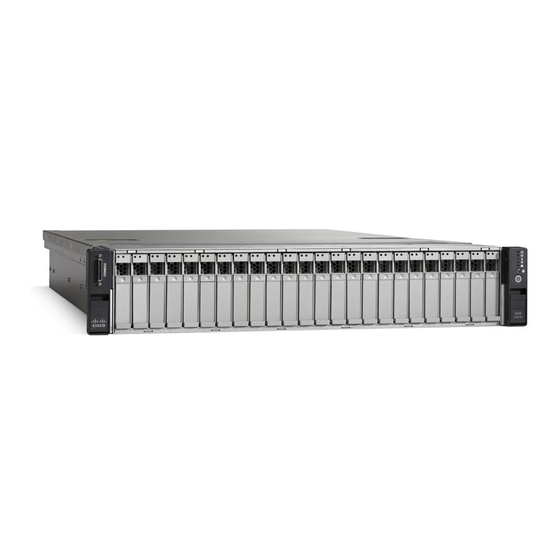Cisco UCS C240 Installationshandbuch - Seite 5
Blättern Sie online oder laden Sie pdf Installationshandbuch für Server Cisco UCS C240 herunter. Cisco UCS C240 22 Seiten. Connected safety and security (css)
Auch für Cisco UCS C240: Benutzerhandbuch (22 seiten)

Chapter 2
Installing the Server
Installing the Server In a Rack
This section contains the following sections:
•
•
•
Installing the Slide Rails
Warning
To prevent bodily injury when mounting or servicing this unit in a rack, you must take special
precautions to ensure that the system remains stable. The following guidelines are provided to ensure
your safety:
This unit should be mounted at the bottom of the rack if it is the only unit in the rack.
When mounting this unit in a partially filled rack, load the rack from the bottom to the top with the heaviest component
at the bottom of the rack.
If the rack is provided with stabilizing devices, install the stabilizers before mounting or servicing the unit in the rack.
Statement 1006
To install the slide rails and the server into a rack, follow these steps:
Install the slide rails into the rack (see
Step 1
a.
b.
OL-25761-01
Installing the Slide Rails, page 2-5
Installing the Cable Management Arm (Optional), page 2-8
Reversing the Cable Management Arm (Optional), page 2-9
Align the slide-rail assembly inside the rack posts with the length-adjustment bracket
item 4) toward the rear of the rack.
Compress the length-adjustment bracket until the mounting pegs (item 5) and locking clips (item 6)
engage the desired rack holes on the front and rear rack posts.
The mounting pegs fit square 0.38-inch (9.6 mm), round 0.28-inch (7.1 mm), or #12-24 UNC
–
threaded holes. They fit the shape of the hole when the pegs are compressed.
The smaller #10-32 round mounting pegs are enclosed in the center of the compressible rear
–
pegs. However, to use the #10-32 pegs, you must use a bladed screwdriver to remove the
square/round front pegs.
Figure
2-2):
Cisco UCS C240 Server Installation and Service Guide
Installing the Server In a Rack
(Figure
2-2,
2-5
